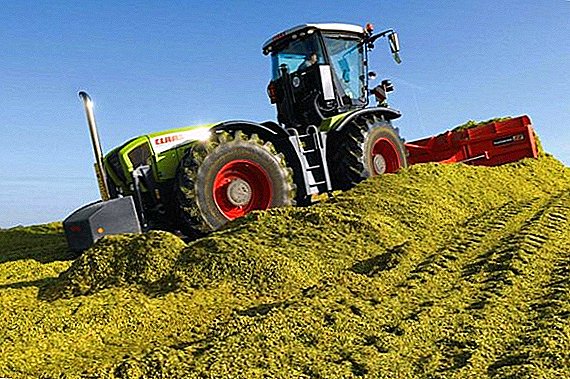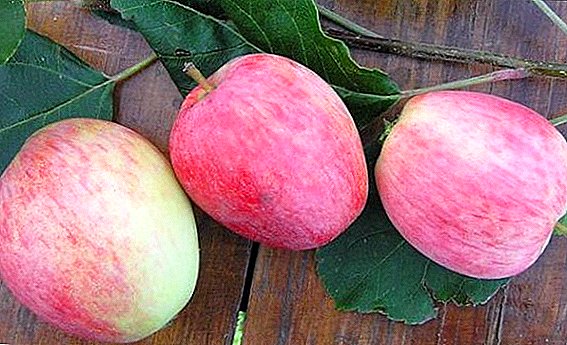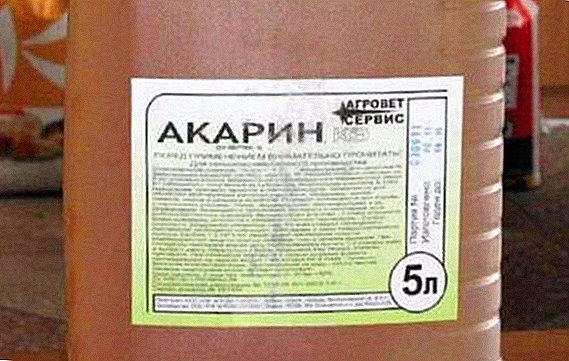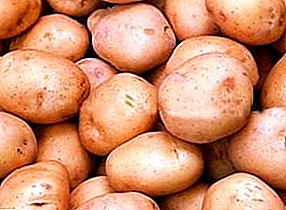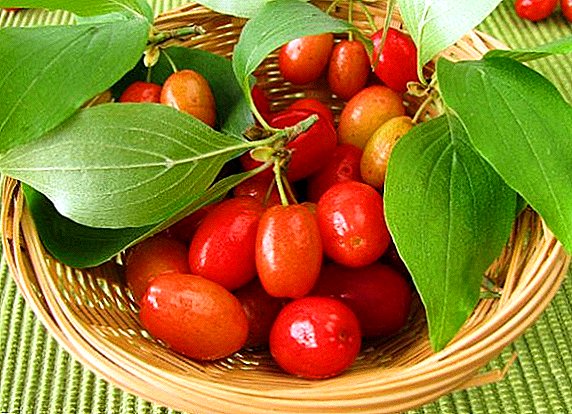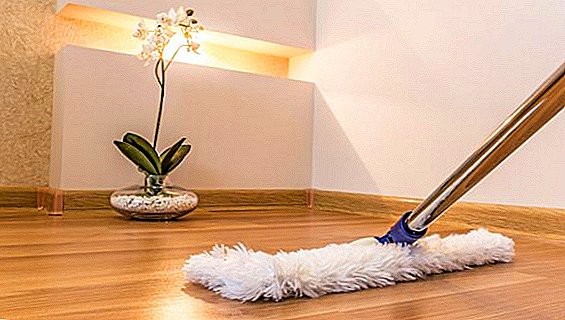 A coral tree or hardi krenat is an indoor plant with excellent decorative properties.
A coral tree or hardi krenat is an indoor plant with excellent decorative properties.
Her red berries ripen in December and become a natural Christmas decoration for your home.
How to grow this tropical guest and will be discussed in this review.
Botanical description
Ardiziya gorodchataya (krenat) is a single-stem shrub. Sometimes there is the formation of a bush in several stems. The branches are decorated with dark green leathery leaves. Glossy serrated oval leaves reach a length of 8-13 cm and several centimeters wide.
Suitable for growing outdoors or indoors with the right conditions. In general, the coral berry tree looks very attractive both with flowers, and with the formed berries. Periodically, the crown is slightly thinned to enhance the attractiveness of the plant.
Did you know? Homeland ardizii Southeast Asia, China, Taiwan, Korea and Japan. In Europe, this ornamental plant appeared relatively recently - since the 1800s.
In the wild nature, a crenate reaches a height of 8 m. The habitat area is tropics. Therefore, when grown in the southern regions in the open field, gardeners face the problem of the germination of numerous shoots.
Blossoms in clusters of small white or pale pink five-petal flowers from late spring to early summer. Fragrant flowers are bisexual, so the bush does not need pollinators. Inflorescences - panicles or umbrellas. When faded, they turn into clusters of red berries that persist for several months.
Flowers and berries are formed in the middle part of the tree. Seeds can be scattered by birds and humans. Growing, they form a rather dense shrub.  Direct evidence that the berries are poisonous - no. They are simply not recommended to use because of the insufficient knowledge of the properties of this unknown plant in our latitudes. In addition, due to the bright color of the berries they are not recommended to be installed in rooms with small children. The berries are very attractive and the child may want to eat them.
Direct evidence that the berries are poisonous - no. They are simply not recommended to use because of the insufficient knowledge of the properties of this unknown plant in our latitudes. In addition, due to the bright color of the berries they are not recommended to be installed in rooms with small children. The berries are very attractive and the child may want to eat them.
Ardiziya kanchatchataya looks great and can occupy a central place in any room. Recommended to grow in a winter garden, greenhouse or room. In all cases, it is important to create conditions close to natural.
Important! Feature leaves Ardizii - thickening on the edge of the sheet. This is not a disease, but a form of existence of nitrogen-fixing bacteria. Many plants in tropical forests "can" get minerals from the air, in particular, nitrogen. It is necessary for the normal development of airdo.
Conditions for growing at home
Grow a plant in moderate and bright light. She also likes high humidity and thrives if you regularly humidify the air around her. To do this, you can install a container with a flower in a tray with pebbles and water.
When evaporating, steam will increase the humidity directly around the airflow pot. Do not forget that there should not be "stagnant" water in the tray in order not to create a favorable environment for the development of phytopathogens. Fertilize the plant is necessary during the growing season - from spring to autumn.
Location
When grown in a pot, Ardizia reaches a maximum height of about 90 cm. The diameter of the plant is 30-38 cm. Therefore, it is convenient to place it near large pieces of furniture or near an empty wall. Outdoors it is suitable for decorating terraces and gazebos.  In nature wardia tolerates direct sunlight. But they are still undesirable. The bush grows best under a canopy of trees, in a fairly deep shade, protected from cold and dry winds. It is possible to have direct sunlight no more than a few hours a day.
In nature wardia tolerates direct sunlight. But they are still undesirable. The bush grows best under a canopy of trees, in a fairly deep shade, protected from cold and dry winds. It is possible to have direct sunlight no more than a few hours a day.
Important! At high humidity (above 80%), Ardizia berries will begin to crumble.
Temperature
Despite its tropical origin, Ardizia gorodchataya prefers coolness. Ideally - + 15 ° C. The higher the temperature, the higher the humidity should be. The average temperature can be + 15 ... + 24 ° C.
Lowering below + 8 ° C is unacceptable - evergreens die under such conditions. And at temperatures above + 24 ° C you will need to constantly maintain high humidity.
Air humidity
Adjust the humidity depending on the temperature:
- at a temperature of + 15 ... + 20 ° C, the humidity in the room is 60% and does not need to be adjusted;
- at temperatures above + 24 ° C (summer), place the container with air in a pallet with wet pebbles. Humidity will rise to 70% locally, around the bush;
- at temperatures above + 28 ° C, spray air and leaves from a spray bottle to ensure optimal hydration.
Home care
Ardizia krenat can thrive both indoors and outdoors. Care at home consists of periodic watering, feeding and temperature control.  Optional, but recommended activities:
Optional, but recommended activities:
- pruning and thinning the crown in the spring;
- soil mulching in order to optimize the temperature, humidity and soil looseness.
Ardizia loves soil with a large amount of organic matter, but at the same time it can bloom on any soil. Therefore, when planting in a pot, make the mixture as loose and nutritious as possible. Mulching will stimulate plant growth.
Planting or transplanting carried out in the spring. If the seed is multiplied by seeds, then remember that it grows slowly. Therefore, the seeds will turn into a full-fledged plant no earlier than 18 months.
Did you know? Ardizia is considered an ecological weed in Australia, especially in tropical forests.
Watering
In the active growth phase, water the shrub with room temperature water as often as necessary to keep the soil moist. Between irrigation soil should have time to dry.
The amount of water needed by a plant depends on many factors: the amount of light it receives, air temperature, humidity level. A good rule would be to water the flower once a week and adjust the frequency depending on how quickly the soil dries. Build on the needs of airdo.
Watering tropical plants is recommended from the top down. But if you prefer lower watering, then do not keep water in the pan longer than 15-20 minutes, so as not to contribute to the development of bacteria.
Top dressing
During the period of growth, fertilizing is carried out every 2 weeks. Terms of fertilization - from spring to autumn. You can use organic fertilizers: compost, rotted manure. From the store, it is desirable to purchase fertilizer, in which the proportion of nitrogen will be 2 times lower than potassium and phosphorus.  This is due to the fact that with the help of nitrogen-fixing bacteria, Ardysia Krenat receives nitrogen from the air. Fertilizers designed for broadleaf evergreens (such as azaleas, rhododendrons, and camellias) are also well suited for hardizia.
This is due to the fact that with the help of nitrogen-fixing bacteria, Ardysia Krenat receives nitrogen from the air. Fertilizers designed for broadleaf evergreens (such as azaleas, rhododendrons, and camellias) are also well suited for hardizia.
Pull the mulch and apply the fertilizer solution directly under the shrub. The root zone extends to about the longest branch. Follow the directions on the fertilizer package, as the concentration and characteristics of the application may vary.
Pruning
Ardizia is an energetic vertically growing shrub. Therefore, it needs restrictive pruning when grown indoors. It is carried out in February-March before the growing season. Pruning thickening, cutting branches, carried out if necessary. Pruned branches in the same way as other trees.
Phytopathogens are usually not visible to the naked eye. Therefore, be sure to disinfect the instrument before cutting. This will help avoid infection by bacteria.
Important! Due to the fact that Ardiziya accumulates nutrients in the roots, it quickly germinates, even if it is completely cut off.
Transfer
In order to achieve the best result, in spring replace the young seedlings in pots that will be 2-4 cm larger in diameter than their previous pot. Transplantation is carried out annually until the seedlings reach the maximum size.
The pot mixture must be very nutritious and loose enough for the roots to receive oxygen. Prepare a mixture of equal parts of compost, garden soil with the addition of sand or perlite.  The purpose of the individual components:
The purpose of the individual components:
- compost - nutritional component;
- garden soil is the soil base of the mixture;
- perlite, sawdust, sand - a structural element that provides friability.
The purpose of the transplant is to renew the soil, prevent it from compacting and provide the plant with nutrients. To conveniently remove the flower from the previous pot - pour it abundantly with warm water at room temperature.
Transplant instructions:
- Tilt the container over a newspaper or paper and carefully remove the plant.
- Place a drain in a new pot (pebbles, rubble, ceramic shards).
- Fill it with prepared or purchased mixture.
- Do not clean the roots of the previous soil specifically, so as not to damage them.
- Place the pot in the center of the pot and fill it with the primer on the sides.
- Moisten the soil.
Did you know? The roots, leaves and berries of Ardizia krenat are used in traditional Chinese medicine.
Breeding
Often wardia is grown from seeds that are sown in the spring, like the usual seeds of other plants. It is advisable to treat the seed with a growth stimulator in order to accelerate the germination process and increase disease resistance.
The seed tank is filled with prepared soil, moistened, sown seeds and sprinkled with sand. Then cover with cling film to accelerate germination. After germination, seedlings will grow for 18 months before the plant is fully formed.
An alternative method of reproduction is to obtain cuttings from lateral shoots in late spring or early summer. Cutlets of lateral shoots are easily separated from the main stem. Place them in pots filled with peat moss and sand.
Moisturize the mixture and then constantly keep it moist. On rooting will take 6-8 weeks. If the room is not warm enough, place the pots in a container that can be covered with foil, creating a greenhouse effect until roots appear. 
Possible difficulties in growing
Likely problems in plant development:
- does not bloom;
- resets color.
If Ardiziya gorodchataya does not bloom, then it lacks sunlight and needs more moisture. Move the plant closer to the window. Spray it in the morning to increase humidity.
If sunshine, on the contrary, is abundant, then the plant will receive a sunburn, manifested in brown spots on the leaves and shriveled berries. Remove the plant from the light source.
Dropping flower buds can be caused by a draft or cold air. Ardiziya likes cool, but not cold. Therefore, move the plant to a warmer place.
Like other plants, it can be attacked by pests:
- aphids;
- scythes;
- worm.
Most pests prefer to inhabit the lower half of the leaf. In time to notice them - inspect the bush every few days. Finding insects, treat the plant with insecticide.
Observance of the correct temperature conditions, irrigation conditions and fertilization will ensure the health of the plant. And you can enjoy its beautiful appearance.




